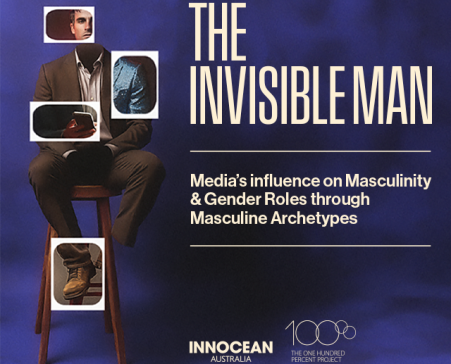Diversity of Thought Blog
An Interview with Marty Linsky on the Adaptive Challenge of Gender Equality
Earlier this month, I had the privilege of interviewing Marty Linsky about Adaptive Leadership and how it relates to the slow progress of gender equality in Australia.
As the author of a number of books on the topic, being a founding member of Cambridge Leadership Associates and having taught at Harvard’s Kennedy School for over 25 years, he provided me with some insights that I had never considered. I hope you enjoy our conversation as much as I did.
Cecelia, Beyond The Spin Editor.

Linsky has worked on advancing gender equity as a coach, trainer, facilitator, and advocate in a variety of settings and co-authored the book Leveling the Playing Field: Advancing Women in Jewish Organizational Life. He is the author or co-author of more than a dozen books and chapters. He is a co-author with Heifetz and Alexander Grashow of the book The Art and Practice of Adaptive Leadership and co-author with Heifetz of the best-selling Leadership on the Line: Staying Alive Through the Dangers of Leading, both published by Harvard Business Press.
Marty Linsky has been a faculty member of Harvard Kennedy School since 1982, except for 1992-1995 when he served as Chief Secretary and Counsellor to Massachusetts Governor William Weld. He has taught leadership, management, politics and media, and is currently faculty chair of several of the school’s executive programs on leadership. He has worked with a wide range of clients in the public, private and non-profit sectors in the US and abroad, including Fortune 500 companies and major federal government agencies.
What is Adaptive Leadership and how did this idea come about?
Adaptive Leadership is the activity of mobilizing people to address their most difficult challenges. Adaptive Leadership is grounded in two core concepts:
First, leadership is a behaviour not a person. The opportunity to exercise leadership comes before each of us every day, regardless of the position we hold or the role we play.
Second, the type of problems that require an exercise of leadership are adaptive in nature, not susceptible to the use of authority or the application of technical expertise, and lie more in people’s values and beliefs than in their reason and logic systems.
These ideas evolved from research exploring the barriers to communities addressing their most pressing issues, and the skills and techniques useful to making progress on them.
In Australia (and most other part of the world), female representation at leadership level remains very low and the gender pay gap is persistently high. How can Adaptive Leadership behaviours help us move from our current reality towards an aspiration of greater balance?
First, I would say ‘female representation in senior authority roles’ not ‘at leadership levels’ since we make a distinction between a position and leadership activity.
Adaptive Leadership helps us understand that the current reality is not an accident. If it is going to change, if we are going to close the gap between that reality and our aspirations, we will have to use techniques that will stir up the community, feel risky, generate resistance, and probably make us uncomfortable as well.
Adaptive Leadership provides tools and frameworks that are useful in maximizing the chances of success and minimizing the likelihood that people trying to close the gender gap will be themselves taken out, pushed aside, or marginalized.
I see many organisations and individuals concerned about how to lead the workforce of the future. Given the rapid change and increasing uncertainty of today’s globalised workforce, how can being more adaptive help us face these challenges?
Being ‘more adaptive’ means tolerating more uncertainty, stepping into the unknown, running experiments, taking risks on behalf of purpose, and embracing difficult change, all of which will help organizations create the workforce of the future in a world where change is a constant and the future is unknown.
You have been at Harvard and working on Leadership topics for quite some time now. How have Leadership models evolved over the past thirty years? And in what ways do they remain the same?
I am not sure there any new ideas after Aristotle, but there are new ways of framing and packaging them that make a lot of difference. Best as I can tell, there are an endless number of leadership ‘models’ out there.
For me, the test is: what works? What is useful to people trying to do the right thing, trying to address difficult issues? We [Cambridge Leadership Associates] do not claim the whole turf for Adaptive Leadership. However, in the world we live in today, where change is constant and the future is more uncertain than we have ever experienced, people tell me that the skills around adaptation seem particularly timely and relevant.
I have heard you say in the past that Leadership is a risky behaviour. Can you expand this thinking a little?
No one is authorized to exercise leadership. So leadership is a subversive activity. People are formally and/or informally authorized to do certain things, whatever their role – CEO, parent or activist – as long as they dutifully do what they are authorized and expected to do they will continue to be authorized in their role.
That is a prescription for the status quo, or at least for pandering to your authorizers, which is good and necessary work in any human organization, but has nothing to do with leadership.
Leadership is all about pushing the boundaries of your authorization on behalf of something you care deeply about, trying to close the gap between your aspiration for your community or organization and the current reality. When you push that boundary, you meet resistance. That’s what makes it dangerous. People get taken out or pushed aside for exercising leadership. Ask Anwar Sadat or Yitzhak Rabin or Ghandi….or folks in Australia who have been pushing for gender equity in their organizations.
It seems that Leaders often have to tell people what they need to hear, rather than what they want to hear. I can’t help but think this is a particular challenge when we need to have the difficult conversations as to why the top level remain robustly male dominated….
I agree, although I’d prefer not to use the word ‘leader’. Using that term seems to me to perpetuate the conflation of leadership with having a big job. I like to use the phrase ‘people trying to exercise leadership’ which suggests both that it is a behaviour and that no one does it 24/7. This is a particular challenge in gender equity.
People at the top of organizations are reluctant to exercise leadership. After all, they have the most to lose. And, any organization which placed me at the top must be doing things right!
Making progress on gender equity in organizational life is not about “convincing people” in the traditional sense of presenting facts and making an argument. The people resisting change know all the facts and know all the arguments. They have to feel some pain, or at least some heat, before they will move.
People in authority often tread a fine line between doing what people expect of them and doing what needs to be done. There is some great research out there that tells us this is a particular challenge for women in leadership roles who need to manage a very delicate balance to be perceived as either competent or liked. Is developing Adaptive Leadership skills therefore particularly important for women?
Absolutely. It is important for anyone trying to lead change on difficult value-laden issues, particular from a minority position, particularly where the change will benefit those leading the charge so they can always be dismissed as self-interested.
One of the challenges for women on this issue is to get men as partners, if not out front. Women leading the struggle for gender equity inside of organizations often become marginalized as singing only one song.
It seems that being adaptive can be very difficult, but is accompanied by great opportunity. What is it about adaptation that is so hard and why should direct our efforts towards being this way?
Adaptation is hard because it involves loss. It is like changing the DNA of an organization. Some of the wonderful DNA that got us to where we are has to be left behind. Leadership is about the distribution of loss. Adaptation is hard because the resistance comes from between the neck and the navel, not above the neck. So it is emotional. Facts are not compelling.
There appears to be a strong buy-in for the need to address the challenges of gender imbalance in leadership, especially given the strong business case for increasing female representation at senior levels. Despite our best intentions however, we are getting very little traction towards real change. How can the Adaptive Leadership framework provide us with a new solution to this old problem and help us gain momentum?
We hope that this framework will give people some new ways of looking at the challenge and some new tools for addressing it. Saying that, for the people who are there, making more progress on the issue than they have so far will very likely require them to do some things that make themselves and others uncomfortable.
What can people expect from an Adaptive Leadership Symposium?
Our aspiration is that people with leave re-energized and reinvigorated, with an expanded tool kit, with a clearer sense of how the world looks to the folks who are resisting change, with a new appreciation for what they themselves are doing or not doing that is getting in the way, and with a commitment to make some changes in their own behaviour, take more risks, and run some specific experiments, all of which will lead to more progress than we have seen.

